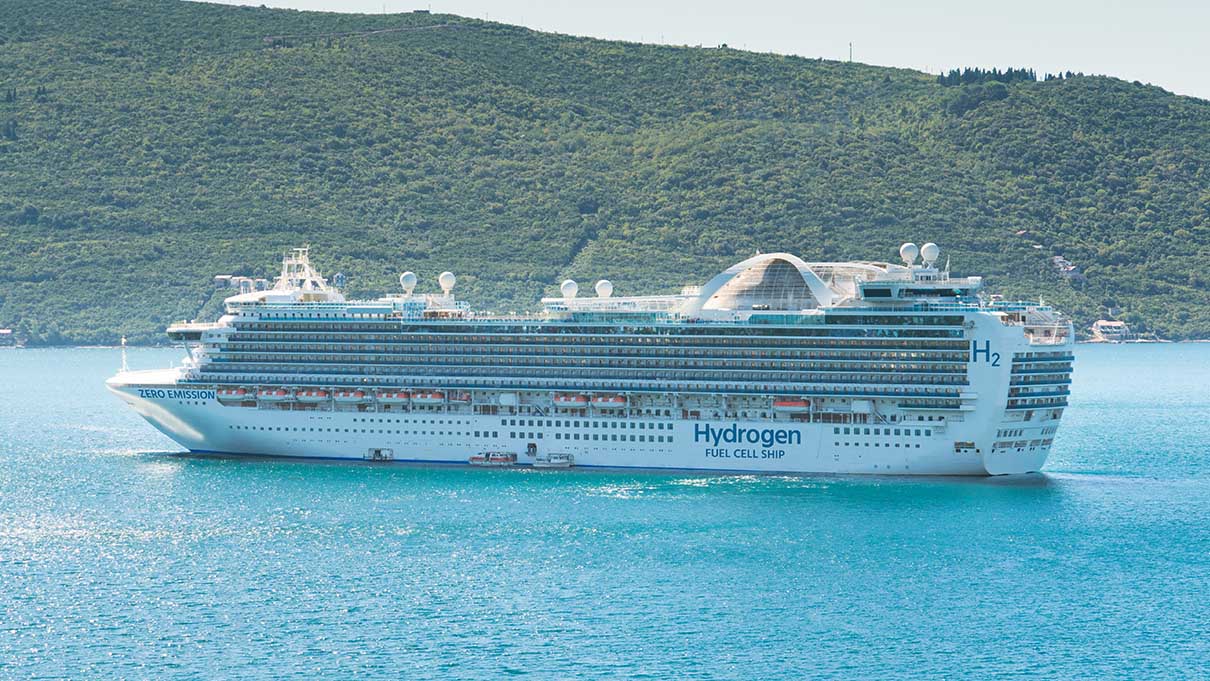Jenny Coenen – The path to zero-emission ships
With on average 20 tons CO2 exhaust per year per ship, international shipping attributes to about 3% of all CO2 emissions world-wide. This is about the same amount as a country like Germany. In order to lower this significant impact, IMO aims at reducing carbon intensity by at least 40% by 2030 and 70% by 2050, compared to 2008.
Energy Efficiency Design Index
What does this imply practically? First there is the Energy Efficiency Design Index (EEDI). Ships built in 2025 should be 30% more energy efficient than those built 10 years earlier. This bar will be progressively raised over the time. Existing ships are required to have a Ship Energy Efficiency Management plan that sets targets for improved energy efficiency and its monitoring throughout ship operations. In 2023 the Energy Efficiency Existing Ship Index will also enter into force, in a similar way as the EEDI does for new ships.
Carbon Reduction Measures for Ships
Compliancy can be met with technological measures like light-weight materials, more efficient hull design, propulsion improvement devices or waste-heat recovery. Second option is operational measures like slow-steaming or more efficient ship sizes. Third there are alternative fuels or energy like biofuels, hydrogen, ammonia, electrical ships or wind-assisted propulsion.
But would that be enough? Data collected by Serra and Fancello* show that technological measures with respect to hull and propellor could reduce the emissions by max 25%. Operational measures (mainly slow steaming) have a potential of 60% reduction. Alternative energy sources are the best bet: biofuels, hydrogen, ammonia and electricity all hold the promise of zero-carbon or carbon-neutrality.
Anticipating an expected ship lifespan of 20 years and projecting a required 55% emission reduction on the final years of the ship, some wicked choices must be made for newbuilds as well.
What can already be seen is a significant drop in the average installed power for large container vessels and crude tankers indicating that slow steaming is seen as a piece to the puzzle. This makes sense of course, the potential is huge (60% as indicated above) and at 10% lower speed already 30% reduction can be achieved.
Scenarios for carbon-free shipping
Experts like DNV think that in 2050 mixed scenarios with prominent roles for hydrogen AND ammonia AND nuclear energy AND ammonia can be expected. If normal economic investment decisions should apply then the fuel with the best chance to earn back capital expenses by means of fuel savings would ‘win’. But it is not very likely that this shall actually happen. It looks like CO2 pricing shall be required to match the price difference and make investments worthwhile.
Sustainable Shipping Strategy Index
The coming weeks Marstrat will dive into ‘transition fuels vs the future fuels’ and examine some particular ship types. We will compare 50% emission with zero-emission scenarios. How will it impact technical aspects of the ship, taking its operation and economic viability into account? The coming episodes will also reveal the Marstrat Sustainable Shipping Strategy Index.
* Serra and Fancello (2020) “Towards the IMO’s GHG goals: A critical overview of the perspectives and challenges of the main options for decarbonizing international shipping”, Sustainability, vol 2020, issue 12



